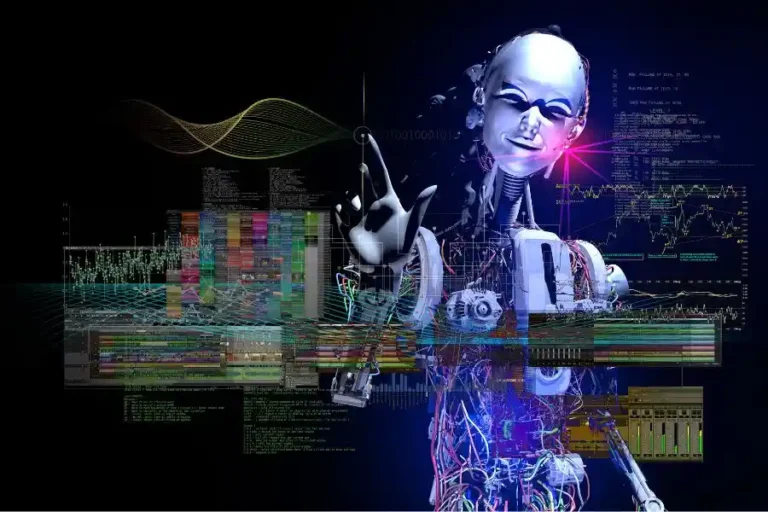Autobà: Embracing the Future of Automotive Innovation
Welcome to the fast-paced world of automotive innovation! Autobà is not just a term; it’s a gateway to a revolution in transportation. In this article, we’ll delve into the latest trends and technologies shaping the automotive landscape, from autonomous vehicles to sustainable mobility solutions. So, fasten your seatbelts as we embark on a journey into the future of driving.

Innovations Driving Autobà Vehicles
Artificial Intelligence and Machine Learning
At the heart of Autobà lies the marvel of artificial intelligence (AI) and machine learning (ML). These technologies empower vehicles to make split-second decisions, enhancing safety and efficiency on the road. With real-time data processing and adaptive algorithms, autonomous cars navigate complex environments with precision, redefining the driving experience.
Sensory Technologies: LiDAR, Radar, and Cameras
Sensory technologies are the eyes and ears of Autobà vehicles. LiDAR, radar, and cameras work in tandem to perceive the world around them, detecting obstacles, pedestrians, and traffic signals. This comprehensive situational awareness ensures smooth navigation and minimizes the risk of accidents, setting new standards for automotive safety.
Advancements in Electric and Hybrid Mobility
Electric Vehicles (EVs)
The rise of electric vehicles marks a pivotal moment in automotive history. EVs offer a sustainable alternative to traditional gasoline-powered cars, emitting zero emissions and reducing our carbon footprint. With advancements in battery technology, EVs boast extended ranges and rapid charging capabilities, making them practical for everyday use.
Hybrid Technology
Hybrid vehicles bridge the gap between combustion engines and electric powertrains. By seamlessly switching between petrol and electric modes, hybrids optimize fuel efficiency and minimize emissions. This dual-power approach represents a transitional step towards a fully electrified future, catering to diverse consumer preferences.
The Evolution of Shared Mobility Services
Ride-Sharing and Carpooling
In urban centers, shared mobility services are reshaping how people commute. Platforms like Uber and Lyft offer convenient alternatives to traditional car ownership, promoting resource-sharing and reducing congestion. By pooling resources and optimizing routes, ride-sharing services optimize efficiency and affordability for passengers.
Bike-Sharing and Scooter-Sharing
For short-distance travel, bike-sharing and scooter-sharing services provide flexible solutions. With user-friendly apps and widespread availability, individuals can easily access shared micro-mobility options. These eco-friendly alternatives alleviate traffic congestion and promote active lifestyles, contributing to healthier, more sustainable cities.
Sustainability and Environmental Impact
Zero-Emission Driving
The automotive industry is embracing sustainability like never before. Electric vehicles lead the charge towards zero-emission driving, mitigating air pollution and combatting climate change. By harnessing renewable energy sources, EVs offer a glimpse into a cleaner, greener future for transportation.
Eco-Friendly Materials and Manufacturing
Beyond vehicle operation, sustainability extends to the production process. Automakers are adopting eco-friendly materials and energy-efficient manufacturing techniques to reduce their environmental footprint. From recycled plastics to renewable energy sources, every aspect of vehicle production is undergoing eco-conscious transformation.
Connected Car Ecosystem
In the digital age, cars are more than mere modes of transportation; they’re connected devices. From advanced infotainment systems to remote diagnostics, modern vehicles offer a seamless digital experience. With integrated GPS, IoT connectivity, and over-the-air updates, cars are evolving into smart, interconnected hubs of technology.
Enhanced Driver Assistance Systems (ADAS)
Safety is paramount in Autobà vehicles, thanks to enhanced driver assistance systems (ADAS). Features like adaptive cruise control, lane-keeping assist, and automatic emergency braking enhance driver safety and reduce the risk of accidents. By leveraging sensor data and AI algorithms, ADAS technologies make driving safer and more enjoyable.
Future Outlook for Autobà
Self-Driving Revolution
The future of Autobà is autonomous. With ongoing advancements in AI and sensor technologies, self-driving cars will become increasingly prevalent on our roads. This shift promises to revolutionize urban mobility, improving efficiency, accessibility, and safety for all.
Sustainable Mobility Solutions
As environmental concerns mount, Autobà will continue to prioritize sustainability. From electrification to shared mobility, innovative solutions will reshape the transportation landscape, paving the way for a cleaner, greener future.
Conclusion
As we navigate the ever-evolving landscape of Autobà, one thing is clear: the future of transportation is here. With cutting-edge technologies and a commitment to sustainability, Autobà vehicles are driving us towards a brighter, more efficient tomorrow. If you also want to read about InstaNavigation then visit that post.
FAQs
What defines Autobà?
Autobà signifies the convergence of automotive innovation and sustainability, shaping the future of transportation with cutting-edge technologies.
How do autonomous vehicles enhance safety?
Autonomous vehicles leverage AI and sensor technologies to analyze road conditions, predict hazards, and make split-second decisions, reducing the risk of accidents.
What role does sustainability play in Autobà?
Sustainability is at the core of Autobà, driving the adoption of electric vehicles, eco-friendly materials, and shared mobility solutions to minimize environmental impact.
What are the benefits of shared mobility services?
Shared mobility services offer cost-effective, convenient alternatives to traditional car ownership, reducing congestion, and promoting resource-sharing in urban environments.
How is digitalization transforming the driving experience?
Digitalization enhances connectivity, safety, and convenience in cars, with features like IoT integration, over-the-air updates, and advanced driver assistance systems shaping the future of mobility.







One Comment